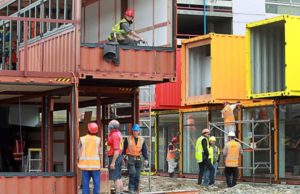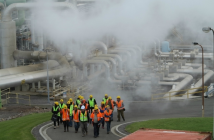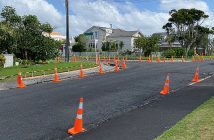Automated health and safety software is in hot demand following the introduction of the Health and Safety at Work Act 2015 says Hamish Howard, managing director of leading health and safety software provider Assura
 Speaking recently to the National Business Review, lawyer Sarah Shortall, best known for representing Pike River directors following the 2010 disaster, put the need for New Zealand to change behaviour succinctly:
Speaking recently to the National Business Review, lawyer Sarah Shortall, best known for representing Pike River directors following the 2010 disaster, put the need for New Zealand to change behaviour succinctly:
“Some of the ‘great’ aspects of New Zealand workplace culture – including working hard and getting things done and being innovative – have had the unintended, negative consequence of workers taking some shortcuts – not with an intent, in my view, to make people unhealthy or unsafe but rather to just get on and get work completed.”
While I understand her sentiment, it’s important to remember that EVERYONE, workers and employers, have a duty to make sure the workplace is safe and healthy. However, there still remains unnecessary fear and concern about punitive powers of the legislation.
A colleague of mine used to work in communications for the Department of Labour – the government department responsible for health and safety information and enforcement before the Pike River tragedy and the advent of Worksafe New Zealand.
Sadly, the construction industry continues to have the highest workplace fatality rates and that year had been particularly deadly.
Sustained media interest led to the current affairs television programme, 60 Minutes, gaining permission for a film crew to accompany a workplace safety inspector as he visited construction sites.
Several times when they pulled up outside a building site, she described scenes of utter panic where upon seeing the vehicle, tools were thrown into the back of utes, tradesman scattered, and scaffolding was left abandoned as they sped off the site leaving trails of dust.
“If it wasn’t so unnecessarily sad, I would have thought I was in the Benny Hill Show,” my colleague said.
But times have changed – partly through tragic events that saw a shake-up of the governance and regulations – but increasingly as New Zealand management replaces fear and loathing of such compliance with viewing health and safety as an essential part of good business practice.
There is also a growing recognition of the positive outcomes that a good health and safety system in the workplace can deliver – including regular communications between employees and management, greater trust, and more positive ‘no blame’ work cultures.
This is even before counting the human, productivity and financial benefits from less workplace accidents and health issues.
The best business leaders are investing in automated platforms that are tailored to their specific business health and safety needs.
These platforms are also accessible on other mobile devices from anywhere and across worksites.
The same colleague remarked on this recently when visiting a Trade Assist site in Christchurch – a company helping in a number of key rebuild projects and which has recently implemented Assura’s automated health and safety platform.
“It was incredible,” she said. “Not a speeding ute in site – in fact young construction workers coming up to me with their iPhones to show their health and safety system, tailored just for their hazards and how they worked.”
Trade Assist partners with leading construction and project management companies providing experienced labour teams on a wide range of commercial projects.
Following the devastation of the Canterbury earthquakes the company has played a key role in the rebuilding and regeneration of Christchurch, with its workforce employed on various anchor projects throughout the city – including the Christchurch Town Hall and the new Justice Precinct.
Integral to this ambitious workload is health and safety, which is at the forefront of management for Trade Assist and its clients.
So much so, the company wanted to take an industry-leading role in this regard.
Assura’s Health and Safety platform was adopted in September 2015, replacing what staff considered to be a drawn-out and disjointed paperwork process.
They now enjoy an automated, simple interface that provides management with a centralised overview.
Assura has provided an automated solution that means incidents, near misses and safety observations are now reported and escalated in real-time.
Information is loaded into one place easily and we don’t end up with a blurred picture at the end of the day.
The site, or field-based system means Trade Assist staff can easily access it from any mobile device, which has led to an increase in the number of events that are being reported and more onsite awareness and learning.
Productivity is also improved as staff no longer have to put down their tools and walk to the other side of a large construction site to lodge a report with management.
Prior to implementing Assura Health and Safety, each site was operating a different reporting system.
The company can now find out what is happening across all of its sites throughout the wider region, providing a consistent and global overview that we didn’t have before.
Snapshots of the overall health and safety performance can be emailed to board directors and are also a powerful reporting tool for clients.
For Trade Assist staff it means complexity is removed and they are free to get on with the job at hand – helping build a renewed Christchurch.




